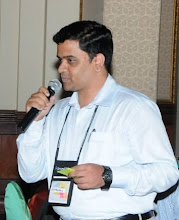-------------------------------------------------------------
The following practices apply to all database backups, not just Oracle backups:
1. Establish a service level agreement (SLA) for backups and recovery. Clearly document the maximum amount of data loss that is permitted, backup retention policies, and how much time is allowed for database recovery.
2. Document the backup methodology and have it formally reviewed. Publish the documentation to an audience that includes the database owner.
3. Periodically test the recoverability of backups. Typically, this is done in a testing environment. A recovery test establishes how long it will take to recover the database.
4. Be prepared to recover from user error, for example when a user inadvertently updates or deletes the wrong data.
5. Have a contingency plan that covers damage to the operating system or hardware-be prepared to move the database to another server.
6. Ensure the safety of backups. The traditional method is to send backup tapes offline. Newer methods involve backups to a backup appliance over the network. A combination of near-line (disk) and far-line (tape or network) backups can be used. Near-line backups reduce the time needed for recovery while far-line backups increase the safety of backups. The tape library should not be a single point of failure-ensure that data can be recovered even if the tape library is damaged.
7. Retain multiple backups in case one set of backups is damaged.
8. Backup scripts should incorporate error checking and an adequate amount of logging. The logs should be retained for an appropriate time. Notification of backup failures should be sent to the database administrators. Backup failures should be formally investigated.
9. Reports of backup successes and failures, the amount of data backed up, and the time it took to perform backups should be generated and sent to an audience that includes the database administrators and the database owner.
10. Changes to any aspect of backup procedures, whether temporary or permanent, should be performed under formal change control procedures.
------------------------------------------------------------------------------------------------
The following practices apply specifically to Oracle database backups:
1. Use Recovery Manager (RMAN) for backups. The advantages of RMAN are so numerous and valuable that it is hard to justify not using it. For example, RMAN checks data blocks for corruption while it is making a backup, single-block recovery is possible with RMAN, and so on. Backups performed using third-party software such as Network Appliance Snapshot can be integrated with RMAN.
2. Prevent unlogged operations in databases that use ARCHIVELOG mode; use the ALTER DATABASE FORCE LOGGING command to do this.
3. Backup all aspects of the database including the archived redo logs (for databases that use ARCHIVELOG mode), the control file, and the parameter file (spfile).
4. Create logical backups (exports) to supplement physical backups. This creates a certain amount of protection from logical damage, such as data entry errors. Use a setting such as FLASHBACK_TIME to ensure the consistency of the exported data.
5. Leverage Oracle's flashback features by increasing the value of UNDO_RETENTION from the default value of 15 minutes to a more appropriate value such as 24 hours. This allows recovery from logical damage without having to resort to physical backups.
6. Databases that run in ARCHIVELOG mode should set LAG_ARCHIVE_TARGET to an appropriate value, such as 15 minutes, to control maximum data loss.
7. Incorporate the use of techniques that check for data corruption. These include initialization parameters, such as DB_BLOCK_CHECKING, DB_BLOCK_CHECKSUM, and DB_LOST_WRITE_UPDATE, and commands that scan the database, such as VALIDATE DATABASE. Oracle Database 11g introduced a single parameter called DB_ULTRA_SAFE that controls the values of DB_BLOCK_CHECKING, DB_BLOCK_CHECKSUM, and DB_LOST_WRITE_UPDATE.

No comments:
Post a Comment